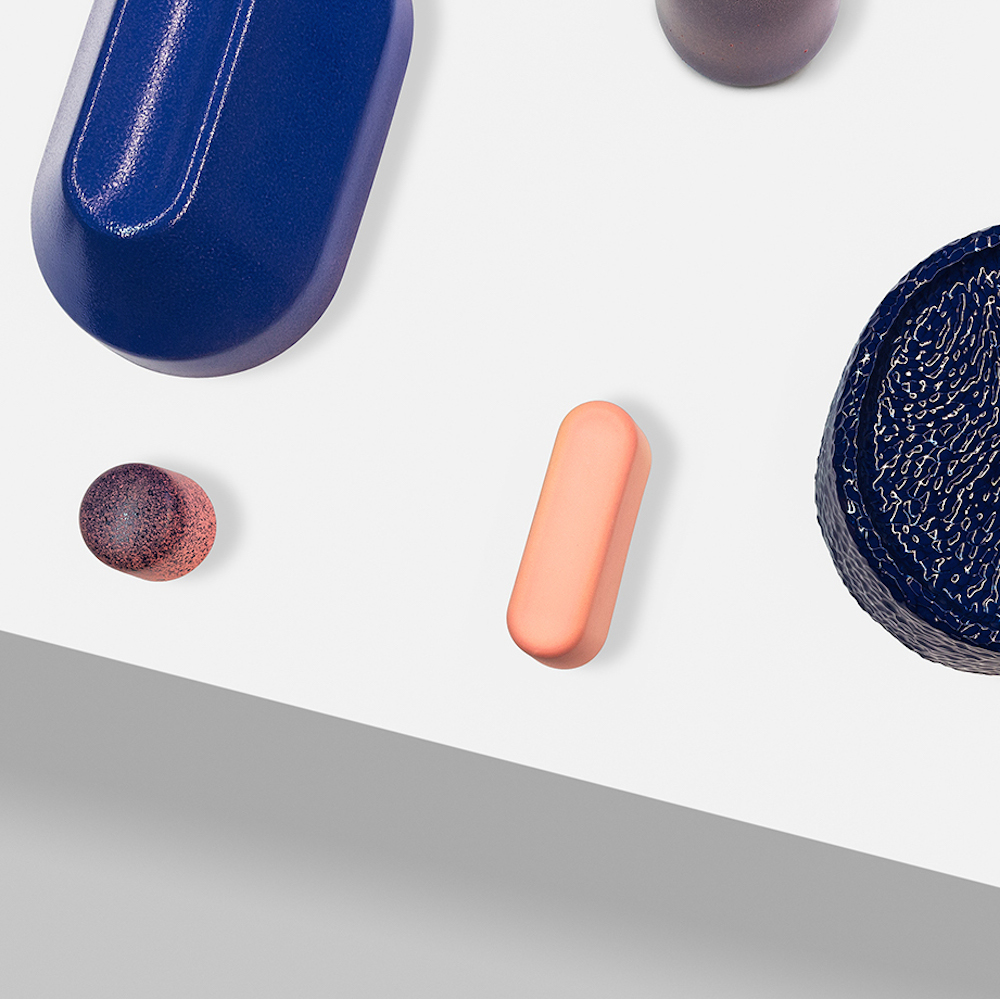BIEL, Switzerland — Dimitri Bähler says that his works are “versatile, spontaneous” and achieved after substantial research. His motivating influences are production processes and the use of the object.
One such experiment, “Volumes, Textures, Patterns and Colors” was on view this summer at the Design Parade at Villa Noailles in the town of Hyères in the French Riviera. The event, according to Sight Unseen, takes place in a 1920s residence built by architect Robert Mallet-Stevens for two art patrons. Each year the residence hosts design exhibitions, workshops and lectures.
Bähler’s submissions for the Design Parade were a range of volumes, all in soft and round shapes. They are marked by distinct patterns, fruits of a study Bähler first began in 2013 at the European Center for Ceramic in Den Bosch, the Netherlands.
Bähler said he decorated the forms by using a special latex-textured foil that comes from a milled plastic sheet. The pattern is transferred from the surface to a volume. After experimenting with the process for some time, the technique started to divide into different paths: digitally-assisted pieces, others done manually with wood carving tools and others that let the glaze naturally create the texture. From Bähler:
“The result is a collection of objects that plays with different variations of volumes, patterns, textures and colors, a kind of dictionary. Always close to an essential abstraction, these shapes can be used as pedestals, fruits bowls, vases and pencil / fruit holders.
“Together, they create a dialogue between functionality and non-functionality, minimalism and decoration, questioning the concept of usefulness in our homes.”
Bähler (b. 1988) lives and works in Biel, Switzerland. He studied at both ECAL (University of Arts and Design, Lausanne) and the Design Academy Eindhoven. He opened his first studio in 2014. According to his biography he was a finalist of Design Parade 8 in 2013 in Hyères. He was nominated twice for the Swiss Design Awards (2014 and 2015). He participated in different residencies around the globe including EKWC, European Center for Ceramic, The Netherlands, Hors Pistes Ouagadougou, Burkina Faso, and the Ishinomaki Laboratory, Japan. He directed different workshops, such as Boisbuchet “Rethink the Modular” 2015, Villa Noailles 2015 and ISDAT 2016.
Do you love or loathe this use of contemporary ceramics? Let us know in the comments.










I’m really drawn to this work body of work. I think it succeeds as a means of questioning the function of objects in the home and as ‘a kind of dictionary’. It certainly lends itself to gorgeous, playful compositions! As objects that straddles different fields of categorisation, they appear beautifully resolved. I’ve not seem the in the flesh but the images give me the sense of pieces I might enjoy living with and reflecting on further.